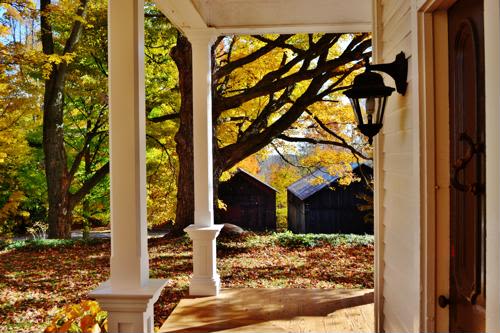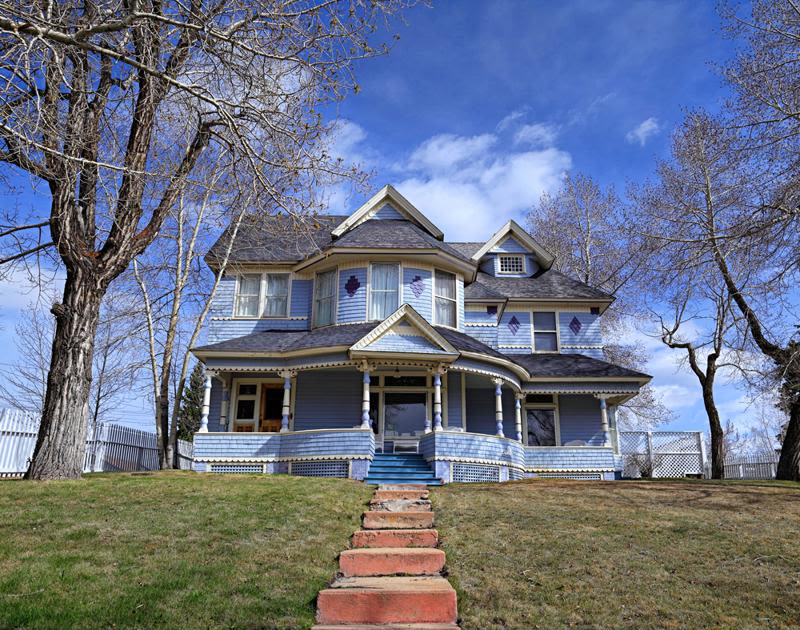- Home
- Resources
- Amerhart Insider Blog
- Project Inspiration
- Tips for remodeling an old house
Tips for remodeling an old house
 Conquering the remodel of an old home can be a monstrous task. Choosing to embrace the charms and quirks of a historic house, while improving other aspects to fit into our expectations of modern living, can be a challenging balancing act. Old structures and building materials of yesteryear can present lots of (expensive) surprises — which can make restoring a historic house challenging, but rewarding when done right.
Conquering the remodel of an old home can be a monstrous task. Choosing to embrace the charms and quirks of a historic house, while improving other aspects to fit into our expectations of modern living, can be a challenging balancing act. Old structures and building materials of yesteryear can present lots of (expensive) surprises — which can make restoring a historic house challenging, but rewarding when done right.
There are certain things to keep in mind when beginning on the journey of remodeling an old home, which hopefully will save homeowners from heartbreak and financial setbacks in the long run, as well as provide them with a stunning final product.
Lay the groundwork first
According to Architectural Digest, the first step is to have the pre-existing systems and structures inspected by a professional. Finding out that they'll need to invest in new wiring throughout the house, or that there's widespread water damage, is never good news. It'll sting a lot more if you had just applied all-new wallpaper or fresh paint. Aesthetics should come after the big fixes.
Fireplaces and chimneys are other practical locations to assess before moving on to decorating. Mortar in regions that utilized a lot of sand has weaker structural integrity, which is often seen in homes created in 18th-century Long Island, says Curbed. To check, you can use your fingers and hands to tap on the mortar and see if it comes apart, or look if anything is visibly missing between bricks.
Be on the lookout for water damage
Look around windows, floors, and ceilings for signs of water damage. Pay particular attention to the sill plate. The sill plate is the bottom horizontal framing component that sits between the home's foundation and the first-floor frame. As it sits close to the damp ground, it is the most vulnerable to water. A warped sill plate can be the cause of crooked floors, which affects the whole house.
Your team matters
Old homes are tricky, fickle things. Enlisting a contractor and an inspector can help predict the costs of the project, and make sure that they're done right. Consider looking into the help of people with experience restoring historic homes. Contractors with past experience with older homes will have a better understanding of how to address common issues and will respect the push for preserving the original aspects of the house over gutting it and starting fresh. Always make sure homeowners and contractors are on the same page.
 Old homes have history, and that's what we love about them.
Old homes have history, and that's what we love about them.
Embrace that certain charm
Old homes have history, and that's what we love about them. Although, sometimes it takes some creativity to make that historic charm function in a modern setting. For example, uneven floors are a common occurrence in older homes, and leveling them out can be a long, expensive process. As opposed to furthering expenses, home-owners can embrace the charm. If the floor is uneven, work with it. A baseboard could be 6" high in one place, and then 8" elsewhere.
Decor counts
Making an old home appear timeless seems like an easy goal, but getting too caught up in certain design blunders can inhibit that. Common mistakes include being too specific to the era when the home was made. Antiques are a nice touch, but being too period-perfect can make a house feel like a museum. Country Living points out that a modern home isn't only going to be decorated in furniture specifically from 2019, and a house from 1864 wouldn't only be decorated in furniture from the year it was built. Humans collect things as they grow, and home-owners should consider that as they finalize their decor. Another common misstep is making the kitchen or bathroom too modern. This will immediately date the renovations. Making the kitchen more accessible and comfortable for this day and age doesn't necessarily mean jumping on the current design bandwagon.
Every home restoration is going to present its own challenges but having clear communication between the contractor and the homeowner will ensure that the process goes smoothly.














